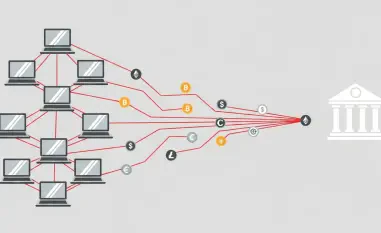In the heart of North America’s logistics hubs, a digital shadow looms over the trucking industry, threatening the very backbone of global trade with an alarming trend of cybercrime. Picture a bustling freight company, coordinating high-value shipments of food and beverages, unaware that cybercriminals have already infiltrated their systems using tools meant for efficiency, turning remote monitoring and management (RMM) software into a weapon for real-world cargo heists since at least mid-2025.
The Stakes of a Vulnerable Supply Chain
The logistics sector, responsible for moving billions of dollars in goods daily, stands as a critical pillar of commerce. Yet, this very importance paints a target on its back for cybercriminals seeking massive payouts. With digital platforms like load boards and the fast-paced nature of freight deals, trust and speed often trump caution, creating ripe opportunities for exploitation. The surge in cyber-enabled thefts since June 2025 has hit transportation firms hard, with attackers zeroing in on commodities easily sold on the black market. This isn’t merely a financial hit—disruptions cascade through supply chains, delaying goods and eroding trust among partners.
Understanding the gravity of this threat is essential for anyone tied to logistics. Small family-run carriers and large corporations alike have fallen victim, with over two dozen incidents reported in just a few months. The dual nature of these attacks—digital breaches leading to physical losses—underscores a new era of crime where virtual access translates to tangible theft. Protecting this industry demands urgent attention, as the consequences stretch far beyond any single company’s balance sheet.
Inside the Cybercriminal Playbook: RMM as a Weapon
Cybercriminals targeting logistics employ a sophisticated strategy, blending technology with deception to devastating effect. The attack often begins with social engineering—hackers hijack email threads through compromised accounts or send spear-phishing messages laced with malicious URLs. They also exploit load boards by posting fake freight listings using stolen credentials, capitalizing on the urgency inherent in securing shipments. These initial steps are designed to bypass suspicion and gain a foothold in a company’s network.
Once inside, attackers deploy legitimate RMM tools such as ScreenConnect, LogMeIn Resolve, or N-able, which are widely used in business settings for remote support. These tools, distributed as signed and trusted software, often evade detection by standard security systems. With remote access secured, cybercriminals conduct detailed reconnaissance, harvest credentials using utilities like WebBrowserPassView, and manipulate operations. In a striking case, one attacker deleted bookings, silenced notifications, and fraudulently booked loads under a carrier’s name, seamlessly coordinating theft from within.
The endgame is chillingly physical—cargo theft orchestrated with insider data gleaned from the breach. Attackers bid on high-value shipments, using their illicit access to outmaneuver legitimate brokers. Since August 2025, incidents have spanned a wide range of targets, showing no preference for company size or scale. This calculated approach transforms digital intrusion into real-world loss, leaving logistics firms grappling with both stolen goods and compromised systems.
Voices from the Frontline: Expert Warnings on RMM Risks
Insights from cybersecurity experts shed light on why RMM tools have become a favored weapon for attackers. Ole Villadsen, a researcher at a leading security firm, points out, “The simplicity of setting up attacker-controlled RMM instances, paired with users’ implicit trust in these tools, makes them incredibly dangerous.” Unlike traditional malware or remote access trojans like Lumma Stealer, RMM software’s benign reputation allows it to operate under the radar, often bypassing antivirus defenses.
Selena Larson, another expert in the field, highlights a critical blind spot for many organizations. “These tools are rarely flagged as suspicious by standard security measures, giving attackers free rein to navigate networks,” she explains. The trend, intensifying through 2025, suggests multiple threat groups may be adopting similar tactics, complicating efforts to trace a single source. This evolving landscape demands a shift in how logistics firms view seemingly harmless software, as the line between legitimate use and malicious intent blurs.
The expert consensus points to a growing sophistication in supply chain attacks, where cybercriminals exploit both technology and human behavior. The inherent trust in RMM tools, combined with their legitimate appearance, creates a perfect storm for undetected breaches. As these warnings echo across the industry, the need for heightened vigilance becomes undeniable, urging companies to rethink their approach to remote access solutions.
The Human Element: Trust as a Weak Link
Beyond the technology, these attacks prey on the human tendency to trust in high-pressure environments. Logistics professionals, often racing against tight deadlines, may overlook red flags in emails or load board postings, inadvertently opening the door to cybercriminals. Spear-phishing attempts are crafted with precision, mimicking legitimate communications to trick employees into clicking malicious links or sharing sensitive details.
Training and awareness are critical, yet often underfunded in an industry focused on operational speed. A single misstep by an overworked dispatcher or broker can compromise an entire network, leading to losses in the tens of thousands of dollars. Real-world examples from recent months show attackers exploiting this urgency, posing as trusted partners to secure fraudulent loads. This human vulnerability, paired with technological gaps, amplifies the risk, making education a cornerstone of any defense strategy.
The impact on employees extends beyond the immediate breach, as trust within teams and with external partners erodes. Companies must foster a culture of skepticism toward unsolicited communications, even when they appear familiar. Addressing this human factor is not just about preventing attacks—it’s about rebuilding confidence in a sector where relationships and reliability are paramount.
Fortifying the Freight Line: Strategies to Combat RMM Threats
Defending against RMM-enabled cybercrime in logistics requires a layered approach tailored to the industry’s unique challenges. Start with robust email and account security—multi-factor authentication (MFA) is non-negotiable, alongside training staff to identify spear-phishing or odd email patterns during high-stakes negotiations. These basic steps can thwart initial access attempts, cutting off attackers before they gain traction.
Next, strict oversight of RMM software usage is essential. Policies should limit installation to authorized personnel, with regular audits to detect rogue instances. Load board interactions also need scrutiny—verify listings and counterparties through secure channels before committing to deals. Additionally, investing in advanced threat detection tools that flag anomalous behavior, even from legitimate software, can catch intrusions early. Monitoring network traffic for unusual remote access patterns adds another layer of protection.
Employee awareness remains a linchpin of defense. Regular workshops on recognizing malicious URLs and reporting suspicious activity empower staff to act as the first line of defense. Combining these measures builds a resilient shield against the dual threat of digital breaches and cargo theft. Logistics firms adopting such proactive steps stand a better chance of outpacing cybercriminals, safeguarding both their data and their shipments in an increasingly hostile landscape.
Reflecting on a Battle Fought and Lessons Learned
Looking back, the wave of cyber-enabled cargo thefts that struck the logistics sector in 2025 exposed a critical vulnerability at the intersection of technology and trust. Cybercriminals wielded RMM tools with devastating precision, infiltrating networks to orchestrate physical heists that cost companies dearly. The incidents, numbering over two dozen in mere months, served as a stark reminder of how digital threats could manifest in the real world, disrupting supply chains and livelihoods.
Moving forward, the industry must prioritize innovative security solutions and foster a culture of vigilance. Collaboration between firms, cybersecurity experts, and law enforcement could pave the way for shared intelligence, helping to anticipate and neutralize threats before they strike. Investing in cutting-edge detection systems and ongoing training will be key to staying ahead of evolving tactics. As logistics continues to digitize, the commitment to safeguarding both virtual and physical assets must remain unwavering, ensuring that the highways of commerce are no longer highways for crime.













